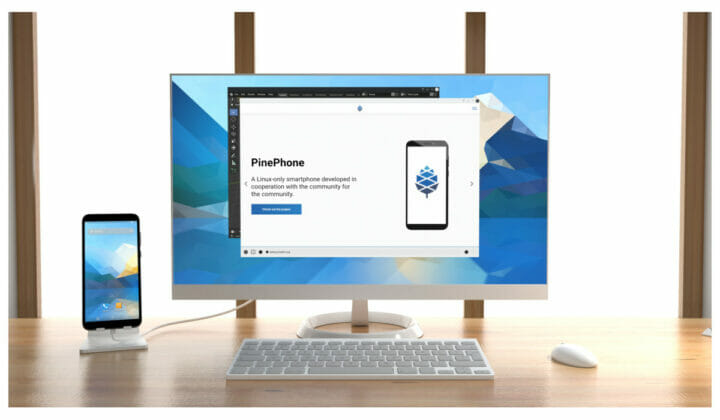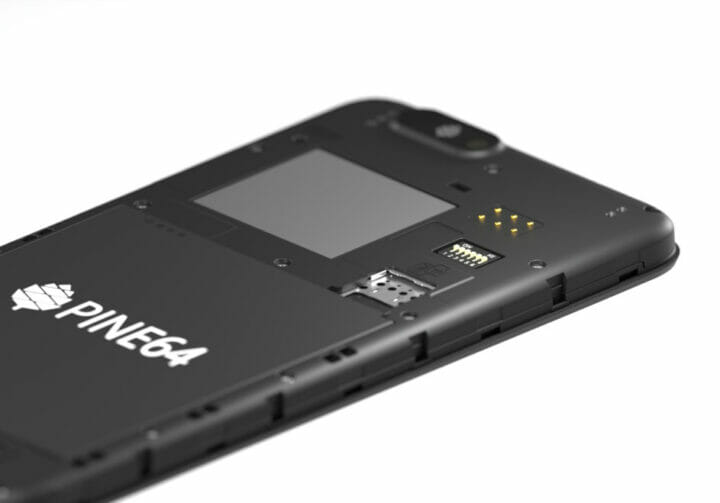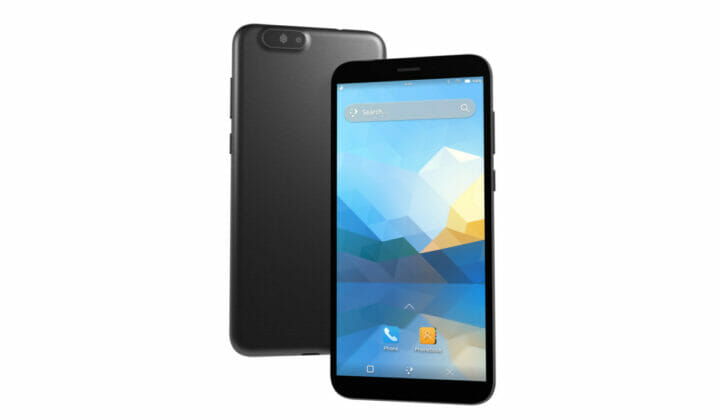Pine64 has now announced the PinePhone Pro Linux smartphone with a Rockchip RK3399S hexa-core processor clocked at 1.5 GHz, that’s a power-optimized version of the popular Rockchip RK3399 processor. It will provide a noticeable upgrade to the PinePhone Linux smartphones launched in November 2019, which, by today’s standards, is quite underpowered.
Besides the faster processor, PinePhone Pro also comes with 4GB RAM and 128 GB storage which should make it a better candidate at mobile desktop convergence, as well as a 5.95-inch display with 1440×720 resolution, a 13MP rear camera, a 5MP front-facing camera, and more.
- SoC – Rockchip RK3399S with an hexa-core processor comprised of 2x Cortex-A72 core @ up to 1.5 GHz, 4x Cortex-A53 cores, Arm Mali T860 quad-core GPU @ 500Mhz
- System Memory – 4GB LPDDR4 @ 800MHz
- Storage – 128GB eMMC flash storage, MicroSD slot
- Display – 5.95-inch 1440 x 720 in-cell IPS with Gorilla Glass 4
- Cameras
- 13MP Sony IMX258 main camera with Gorilla Glass 4 protective layer
- 5MP OmniVision OV5640 front-facing camera
- Audio – Built-in microphone, speaker, 3.5mm audio jack
- Connectivity
- Quectel EG25-G for global 4G, CDMA and GSM bands, GPS, GPS-A, GLONASS (Same as the original PinePhone)
- Dual-band 802.11b/g/n/ac WiFi 5 and Bluetooth 4.1 via Ampak AP6255 wireless module
- USB – USB-C 3.0 port for power, data, and DisplayPort Alt. mode
- Sensors – Accelerator, Gyroscope, Proximity, Compass, Ambient light
- Expansion – Pogo pins compatible with the original PinePhone
- Debugging – UART via 3.5mm audio jack
- Misc
- Privacy hardware switches for cameras, microphone, WiFi and Bluetooth, LTE modem (including GPS), and headphones (to enable UART output)
- Volume up / down rocker, and Power button
- Flash / Torch function
- Vibration motor
- Status LED
- Battery – Samsung J7 form-factor 3000mAh
- Power Supply – 5V/3A (15W) via USB-C port with Quick Charge (USB PD) function
- Dimensions – 160.8 x 76.6 x 11.1mm (about two millimeters thicker than PinePhone)
- Weight – Approx. 215g (vs 185 grams for the original PinePhone)
 I really thought the next PinePhone would come with a Rockchip RK3566 processor because of the higher efficiency of the Cortex-A55 cores together with the 1.8/2.0 GHz CPU frequency delivering higher performance than the Allwinner A64 quad-core Cortex-A53 processor @ 1.2 GHz. But instead, Pine64 collaborated with Rockchip to fine-tune the RK3399 SoC’s performance so that it meets the necessary thermal and battery-consumption envelopes, as and as a result, RK3399S was born. Pine64 also explained Rockchip helped a great deal in enabling the PinePhone Pro’s suspend state, which allows the smartphone to receive calls and SMS messages while preserving the battery.
I really thought the next PinePhone would come with a Rockchip RK3566 processor because of the higher efficiency of the Cortex-A55 cores together with the 1.8/2.0 GHz CPU frequency delivering higher performance than the Allwinner A64 quad-core Cortex-A53 processor @ 1.2 GHz. But instead, Pine64 collaborated with Rockchip to fine-tune the RK3399 SoC’s performance so that it meets the necessary thermal and battery-consumption envelopes, as and as a result, RK3399S was born. Pine64 also explained Rockchip helped a great deal in enabling the PinePhone Pro’s suspend state, which allows the smartphone to receive calls and SMS messages while preserving the battery.
In a way, it makes perfect sense, as Rockchip RK3399 is well supported in mainline Linux, while RK3566 and RK3568 will require more work before most/all features are implemented. The new PinePhone Pro keeps many of the same features as the original PinePhone including a similar display (albeit slightly thicker), the same pogo-pin systems and back cover attachment as the original PinePhone, making it compatible with all existing add-ons, including the keyboard, PineDio LoRa, fingerprint reader and wireless charging cases.

The default operating system for the PinePhone Pro is Manjaro Linux with KDE Plasma Mobile, but most if not all of the operating systems already available PinePhone should eventually be supported, and more may come. When asked about battery life, Pine64 did not have power consumption numbers to provide yet, but one should expect battery life to be equivalent or better than for the PinePhone for both on-screen time and standby.
Just like most Pine64 products, the PinePhone Pro will rely on work from the community for software support, and the first PinePhone Pro devkit is up for pre-order for $399 plus shipping and eventual import taxes now with a clear focus on developers and established contributors, although newcomers with an established development record can also pre-order. Tech enthusiasts without a developer background are asked to wait a couple of more months for the second batch of PinePhone Pro “Explorer Edition” that is scheduled to be manufactured before the end of the year, and ship in early 2022. Additional information may also be found on the product page.

Jean-Luc started CNX Software in 2010 as a part-time endeavor, before quitting his job as a software engineering manager, and starting to write daily news, and reviews full time later in 2011.
Support CNX Software! Donate via cryptocurrencies, become a Patron on Patreon, or purchase goods on Amazon or Aliexpress





